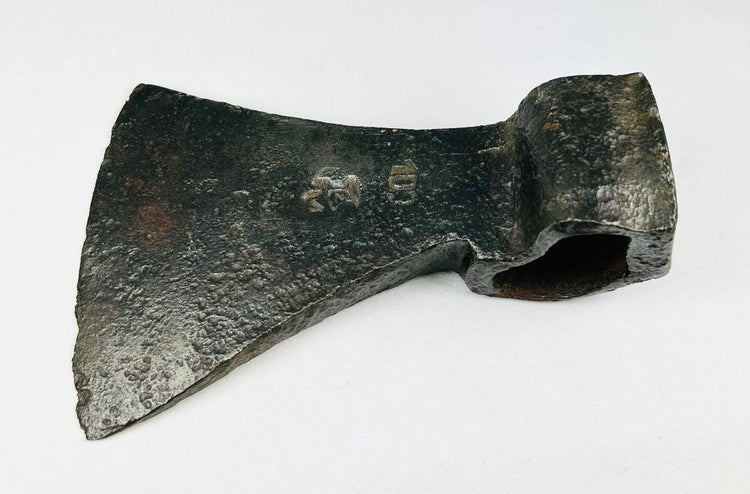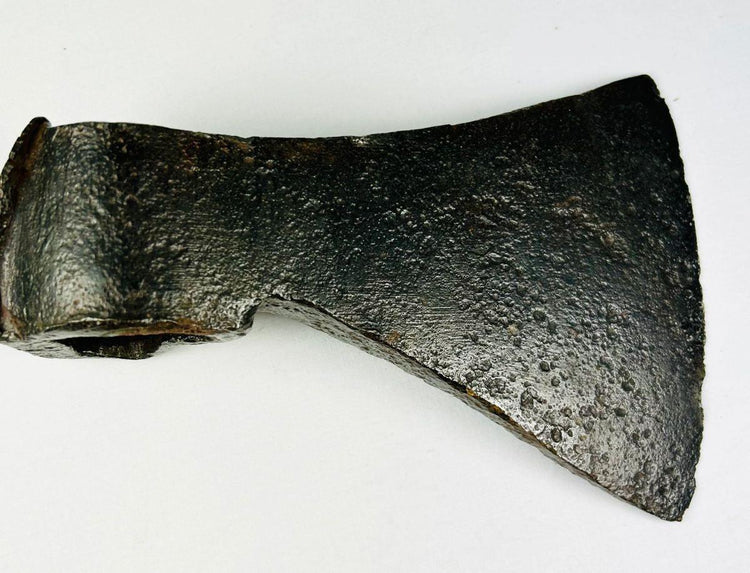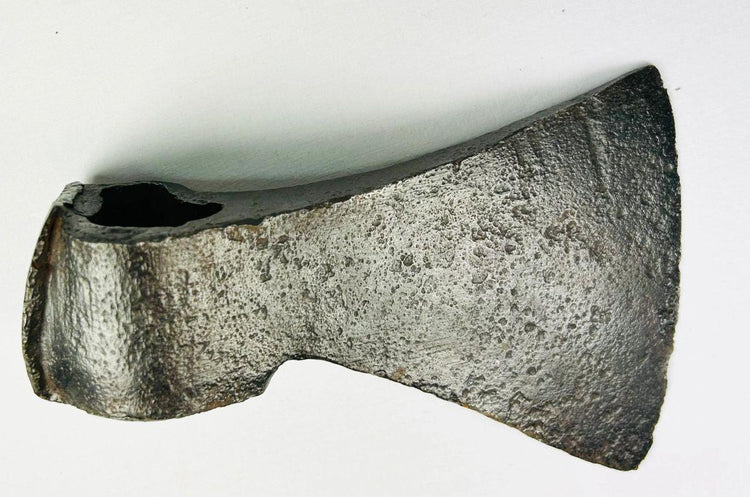Medieval | Iron Axe Head with Markings | Circa 12th-15th Century
Description
More
Less
Historical Context & Origin
Region: Northern or Eastern Europe
Material: Forged Iron
Period: 12th–15th Century CE
Description
This medieval iron axe head, dating to the 12th–15th century CE, is a robust example of the dual-purpose tools and weapons used in everyday life and warfare during the Middle Ages. Forged by skilled blacksmiths, the axe features a slightly curved blade for effective chopping and a flat poll for hammering, highlighting its versatility as both a practical tool and a weapon of combat. Its weathered surface, etched markings, and rich patina reflect centuries of use and cultural significance.
Features
- Forged iron construction for durability and strength
- Slightly curved blade designed for chopping and cutting
- Flat poll at the rear, likely used for hammering
- Visible etched markings, possibly denoting maker’s marks or ownership symbols
- Natural patina and surface pitting, evidence of great age and authentic use
Cultural Significance
Axes were indispensable in medieval Europe, serving both as utilitarian tools for woodworking, hunting, and daily labor, as well as weapons for defense and battle. This dual function made them vital to society, symbolizing resilience, practicality, and martial readiness. The etched markings may further link the piece to regional identity, ownership, or cultural symbolism.
Condition
The axe head displays natural patina, weathering, and pitting consistent with centuries of age. Its form has been preserved with care, maintaining both its structural integrity and the character of its long history.
Dimensions (approximate)
Length: 6.25 in
Age
Circa 12th–15th Century CE
Learn More
Explore the Untold Story of the Axe Through the Ages
Description
Historical Context & Origin
Region: Northern or Eastern Europe
Material: Forged Iron
Period: 12th–15th Century CE
Description
This medieval iron axe head, dating to the 12th–15th century CE, is a robust example of the dual-purpose tools and weapons used in everyday life and warfare during the Middle Ages. Forged by skilled blacksmiths, the axe features a slightly curved blade for effective chopping and a flat poll for hammering, highlighting its versatility as both a practical tool and a weapon of combat. Its weathered surface, etched markings, and rich patina reflect centuries of use and cultural significance.
Features
- Forged iron construction for durability and strength
- Slightly curved blade designed for chopping and cutting
- Flat poll at the rear, likely used for hammering
- Visible etched markings, possibly denoting maker’s marks or ownership symbols
- Natural patina and surface pitting, evidence of great age and authentic use
Cultural Significance
Axes were indispensable in medieval Europe, serving both as utilitarian tools for woodworking, hunting, and daily labor, as well as weapons for defense and battle. This dual function made them vital to society, symbolizing resilience, practicality, and martial readiness. The etched markings may further link the piece to regional identity, ownership, or cultural symbolism.
Condition
The axe head displays natural patina, weathering, and pitting consistent with centuries of age. Its form has been preserved with care, maintaining both its structural integrity and the character of its long history.
Dimensions (approximate)
Length: 6.25 in
Age
Circa 12th–15th Century CE
Learn More
Explore the Untold Story of the Axe Through the Ages
You May Also Like




















